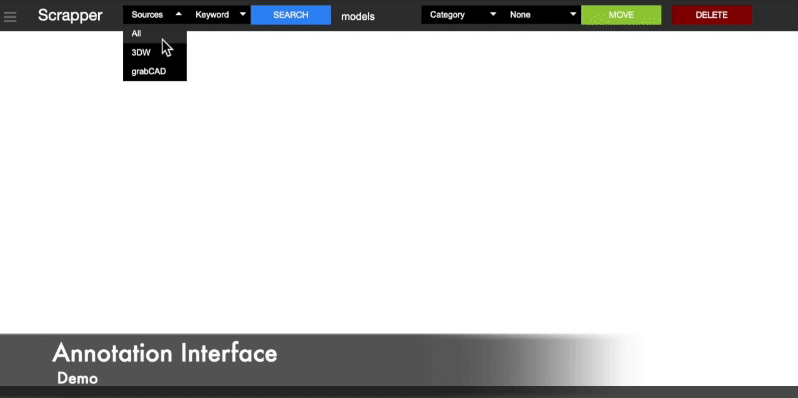We  introduce a large-scale annotated mechanical components benchmark for classification and retrieval tasks named Mechanical Components Benchmark (MCB): a large-scale dataset of 3D objects of mechanical components. The dataset enables data-driven feature learning for mechanical components. Exploring the shape descriptor for mechanical components is essential to computer vision and manufacturing applications. However, not much attention has been given on creating annotated mechanical components datasets on a large-scale. This is because acquiring 3D models is challenging and annotating mechanical components requires engineering knowledge. Our main contributions are the creation of a large-scale annotated mechanical component benchmark, defining the hierarchy taxonomy of mechanical components, and benchmarking the effectiveness of deep learning shape classifiers on the mechanical components. We created an annotated dataset and benchmarked seven state-of-the-art deep learning classification methods in three categories, namely: (1) point clouds, (2) volumetric representation in voxel grids, and (3) view-based representation.
introduce a large-scale annotated mechanical components benchmark for classification and retrieval tasks named Mechanical Components Benchmark (MCB): a large-scale dataset of 3D objects of mechanical components. The dataset enables data-driven feature learning for mechanical components. Exploring the shape descriptor for mechanical components is essential to computer vision and manufacturing applications. However, not much attention has been given on creating annotated mechanical components datasets on a large-scale. This is because acquiring 3D models is challenging and annotating mechanical components requires engineering knowledge. Our main contributions are the creation of a large-scale annotated mechanical component benchmark, defining the hierarchy taxonomy of mechanical components, and benchmarking the effectiveness of deep learning shape classifiers on the mechanical components. We created an annotated dataset and benchmarked seven state-of-the-art deep learning classification methods in three categories, namely: (1) point clouds, (2) volumetric representation in voxel grids, and (3) view-based representation.
Project Page: https://mechanical-components.herokuapp.com/
You can download the two datasets related to the MCB project: Dataset A (Aggregated data from TraceParts, 3DWarehouse, and GrabCAD) and Dataset B (Aggregated data from 3D Warehouse and GrabCAD).




